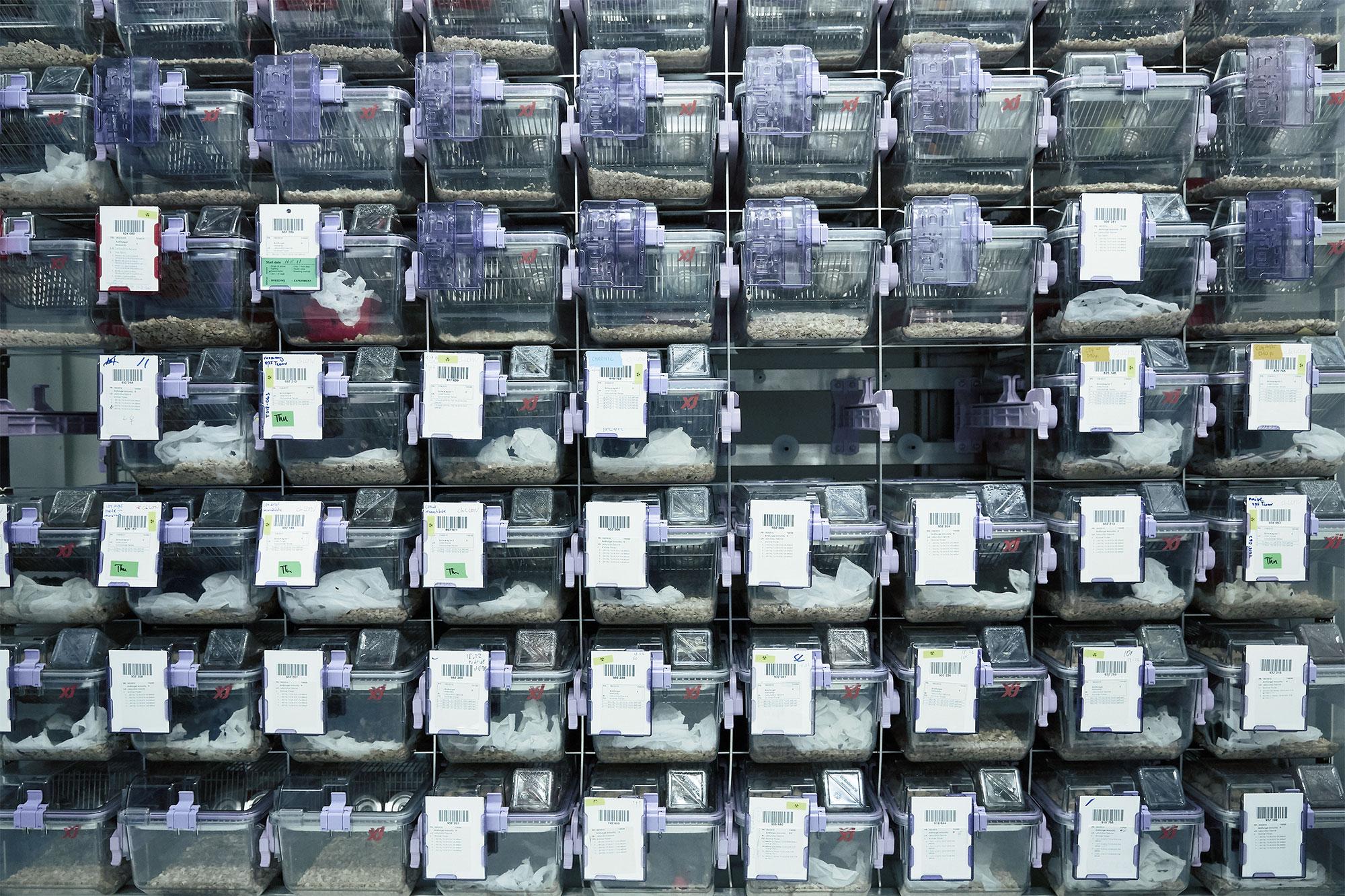Animal experiments and 3R (1/4): Wound healing in mice and cell cultures

Research projects involving animal experiments employ a variety of methods. An SNSF-funded project on skin diseases, ulcers and cancer exemplifies this.
Sabine Werner, professor of cell biology at ETH Zurich, studies how wounds heal. Knowledge of cell and tissue processes helps to better understand, diagnose and treat certain skin diseases. Here the focus is not primarily cuts and abrasions but rather wounds that fail to heal, such as ulcers and chronic skin diseases like neurodermatitis. Sometimes healing results in heavy scarring, for example following burns. Findings from research into wound healing also help to explain excessive proliferation of cancer cells.
A piece of back skin
“To understand complex diseases, we need animal experiments that show us how different cell types interact,” says Werner. “That enables us to generate hypotheses that we can ultimately test on patients.” In this project, for example, individual genes involved in signalling pathways in mice are repressed. Under anaesthesia, a piece of dorsal skin is excised from the animals, just as moles are sometimes removed in humans. Over the following days, healing is meticulously documented. After three days to two weeks, the mice are killed to examine the wound tissue. On a scale of 0 to 3 used throughout Switzerland to measure distress in laboratory animals, these experiments correspond to severity degree 2. Their financial share of the overall research project is 22 per cent.
A similar share of the budget (18 per cent) is used for experiments with mice whose cells and tissues are studied after euthanisation with carbon dioxide. This corresponds to severity degree 0 as defined by law. In certain experiments, the animals are injected with a special drug a few hours before they are killed, in which case the experiments correspond to severity degree 1.
Most of the resources go to experiments with cells and tissue that have been provided by patients or have been cultivated exclusively in the laboratory for many years. These experiments make up the largest part of the project, accounting for 60 per cent of expenditures. The various research approaches are complementary. Used together, they enable development of better therapies for humans and animals.
As few mice as possible
The 3R principles are central to everyday laboratory life. “The 3R principles are part of human nature,” says Werner. “I don’t know any researchers who like doing animal experiments.” Consequently, in the course of her research, Werner has also developed replacement systems (the first R: “replace”), in which different cell types are combined and signalling molecules can be added. This not only reduces the number of mice needed for the project but is also faster and usually cheaper. Werner tries to use such systems whenever possible. Even if an experiment requires mice, the first step is to use half the number of mice (the second R: “reduce”). Only if the preliminary experiment yields promising data is a repeat experiment done with the same number of animals to obtain robust results. Furthermore, the experimental methods and care of the animals are continually being improved to minimise stress to the mice and to disturb them as little as possible during observation (the third R: “refine”).
The SNSF finances a variety of methods
In 2019, the SNSF provided funds for research in excess of 970 million Swiss francs. Nearly 140 million Swiss francs went to research projects that involve animal experiments. This also includes the project by Sabine Werner described here. SNSF funding is therefore invested in a range of very different research approaches, always with the aim of answering important questions.
It is impossible to determine precisely, in any meaningful way, how much of which chemical and what proportion of the initial cost of a piece of equipment was used for animal experiments. Nevertheless, to obtain a rough idea, we estimated the proportion of time spent by the scientists funded by SNSF project 169204 on animal experiments and the subsequent processing of tissue (severity degree 2, on a scale of 0 to 3), on research with cells and tissue for which animals are killed without prior intervention (severity degree 0; rarely, severity degree 1) and on the remaining experiments without animals. The salary costs for doctoral students and postdocs were also apportioned accordingly (see table below).
Budget: one-fifth for experiments involving stress to animals
The result is that about 40 per cent of the SNSF grant goes to animal experiments and research with cells and tissue. Alone, animal experiments in which wounds are inflicted account for 22 per cent of the budget. This includes the SNSF’s half-share of the animal husbandry costs. Not included are other sources of funding, such as ETH Zurich’s other half of the animal husbandry costs as well as subsidies for training and approval procedures.
It is also worth noting that more than half of the project budget was transferred to the follow-up project. This is because other funding sources were available for the first part, whereas SNSF funds are essential for the continued funding of all project staff in the second part. In the follow-up project, the share for animal research is expected to increase to around 70 per cent.
Animal research costs of SNSF project 169204 in Swiss francs:
Total SNSF grant
379,000
Animal experiments
82,000
22%
Research using animal cells and tissue
68,000
18%
Research without animals
229,000
60%
Additional support
Half of animal husbandry costs
5,000
Training and approvals
10,000